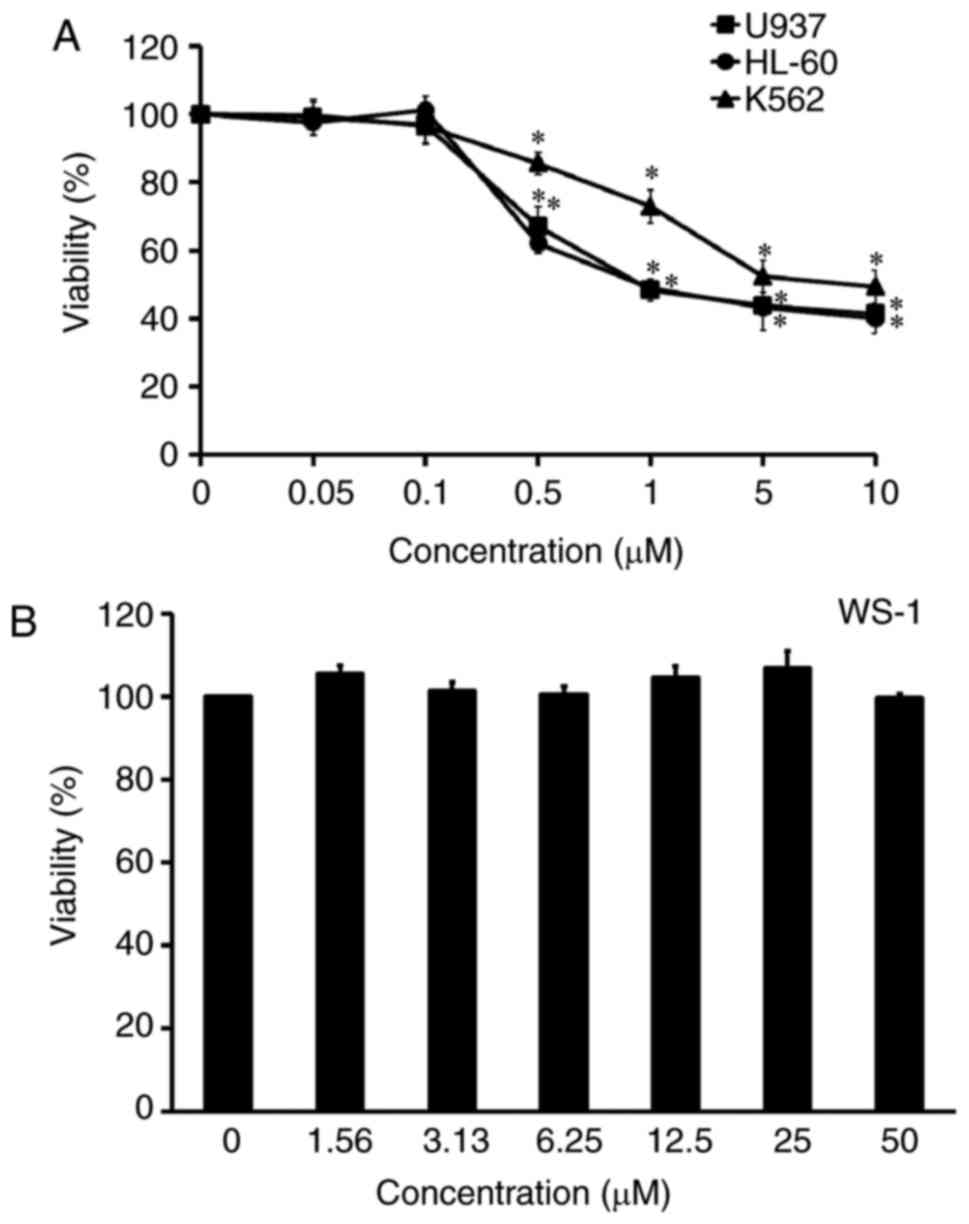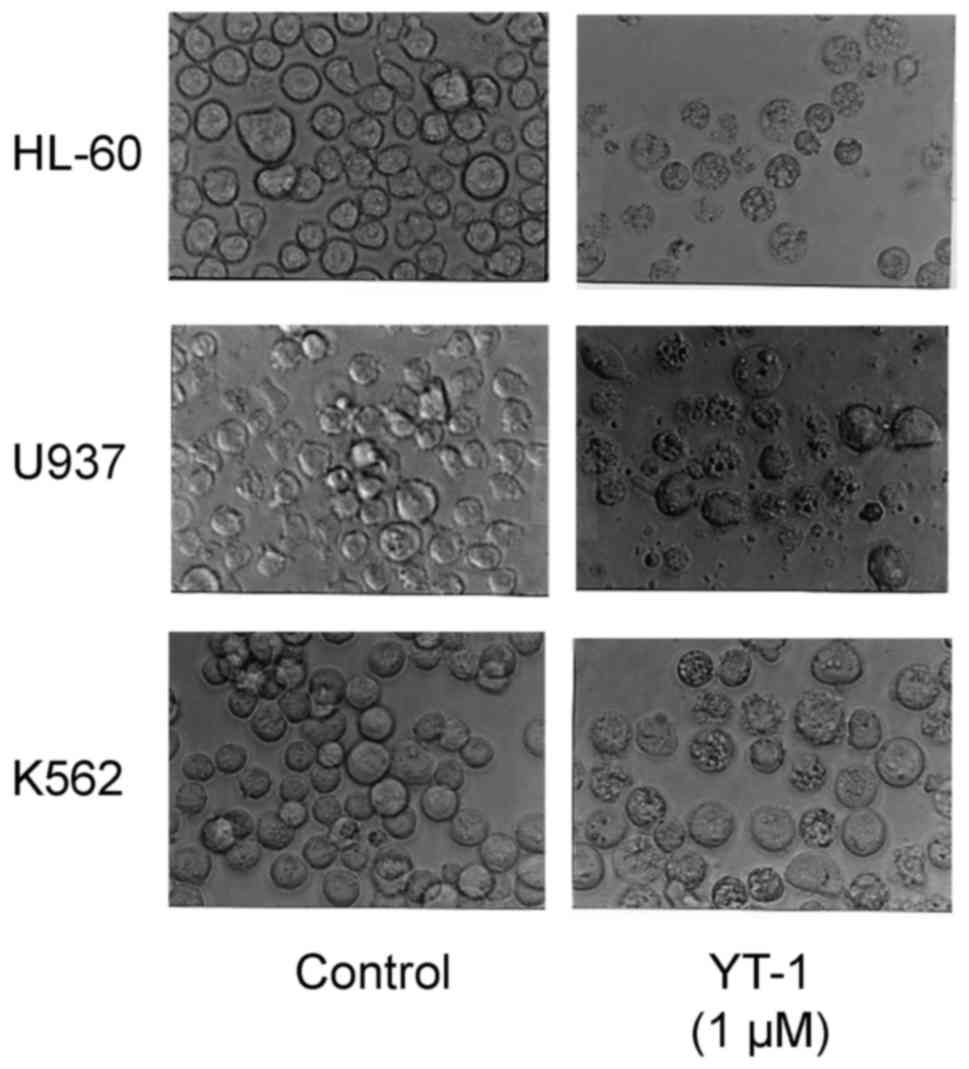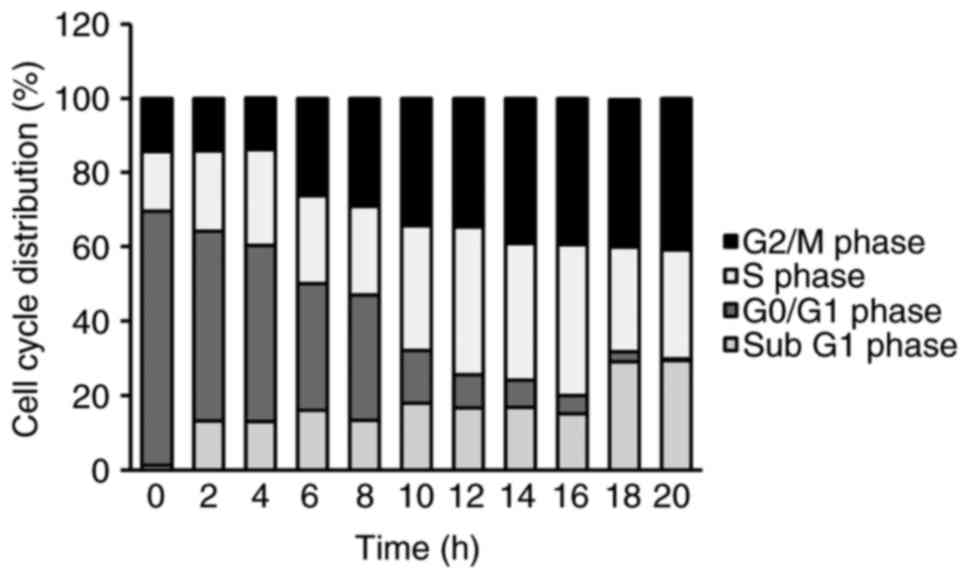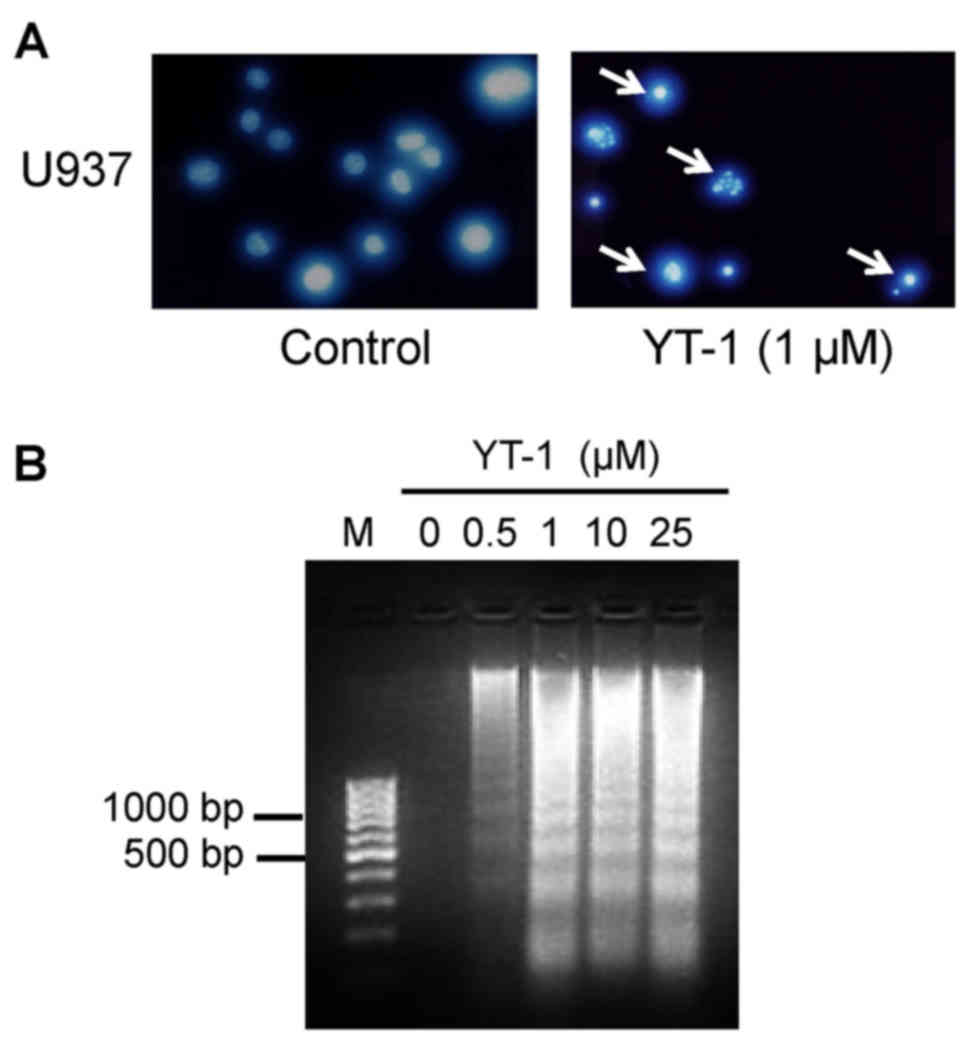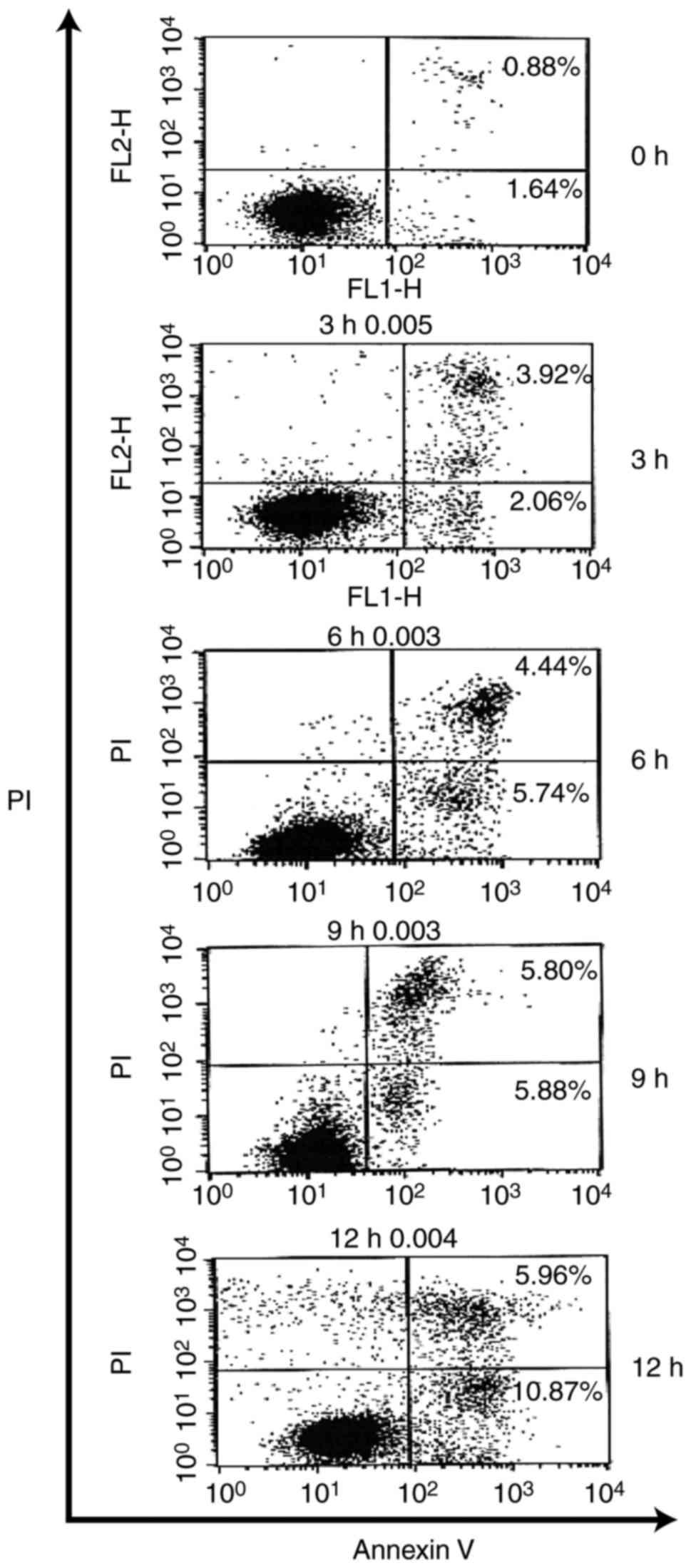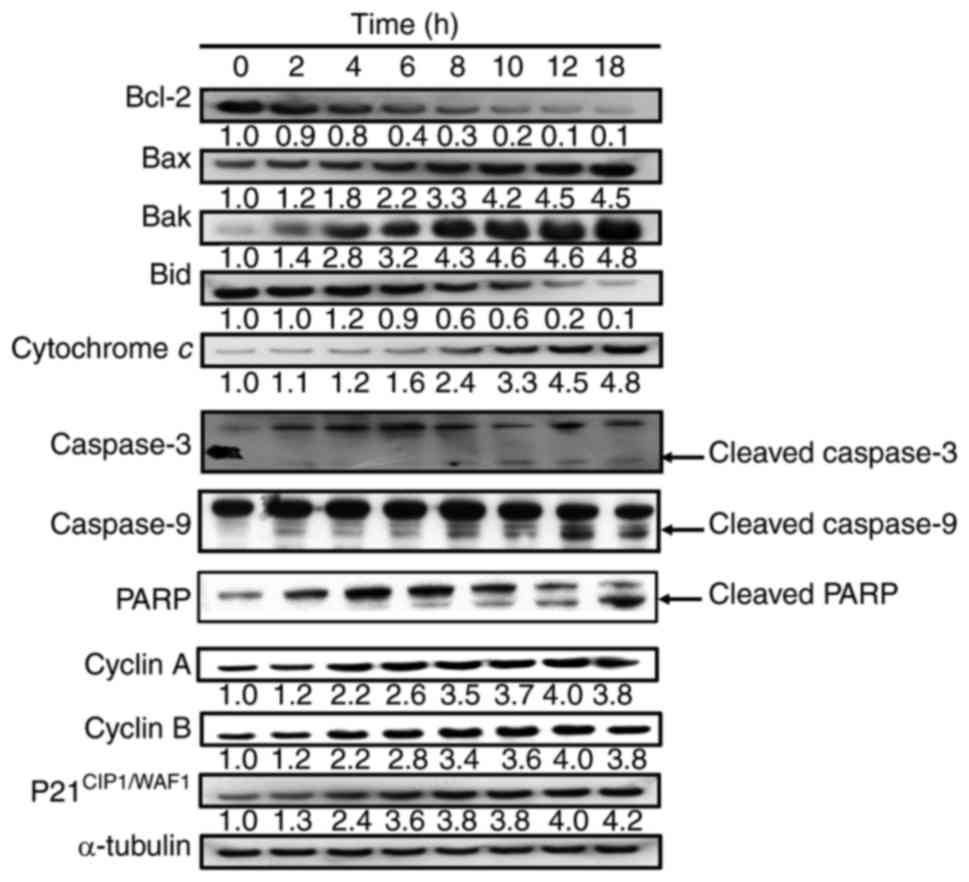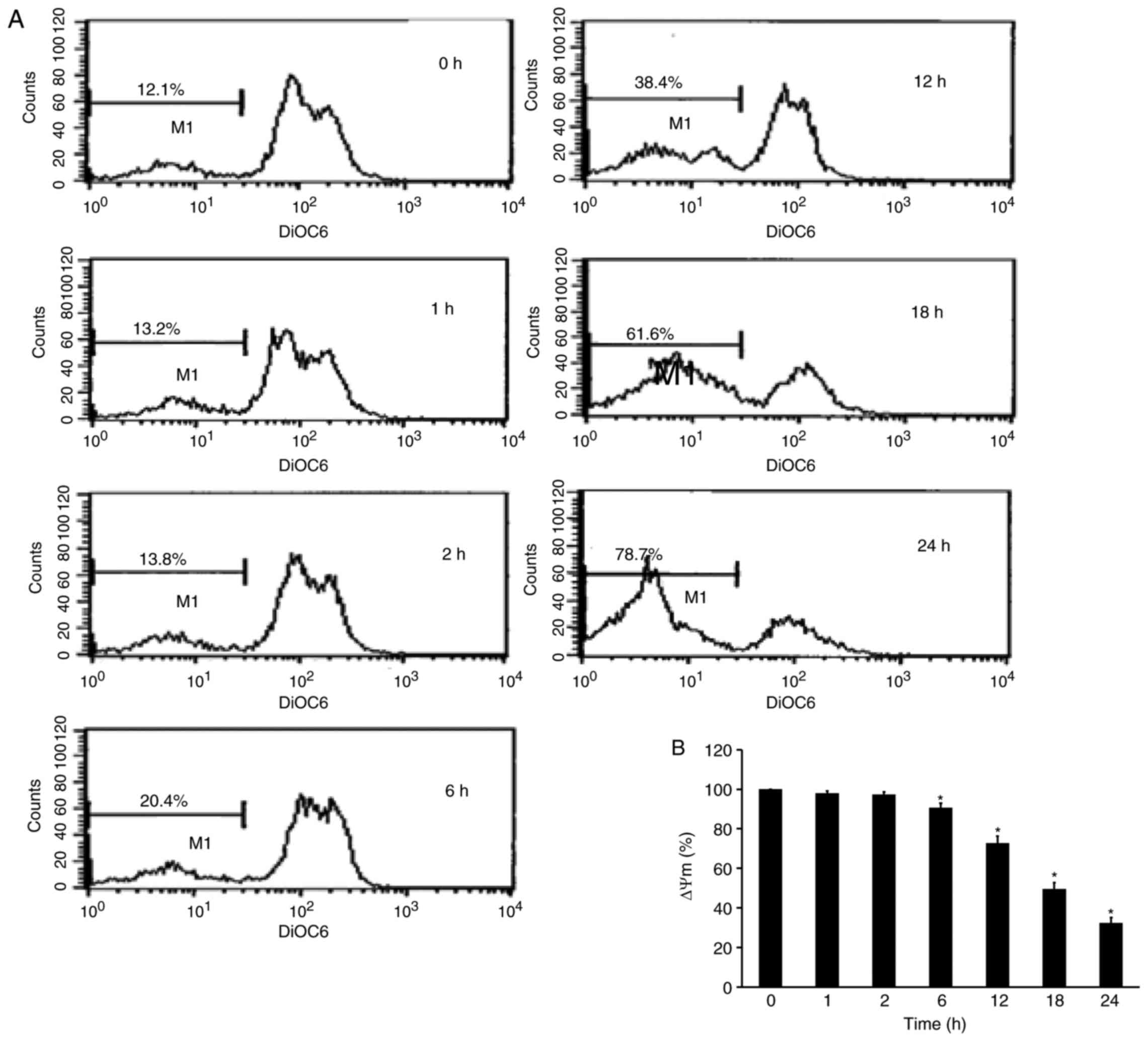|
1
|
Kohnken R, Porcu P and Mishra A: Overview
of the use of murine models in leukemia and lymphoma research.
Front Oncol. 7:222017. View Article : Google Scholar : PubMed/NCBI
|
|
2
|
Allart-Vorelli P, Porro B, Baguet F,
Michel A and Cousson-Gélie F: Haematological cancer and quality of
life: A systematic literature review. Blood Cancer J. 5:e3052015.
View Article : Google Scholar : PubMed/NCBI
|
|
3
|
Medinger M, Zeiter D, Heim D, Halter J,
Gerull S, Tichelli A, Passweg J and Nigro N: Hypothyroidism
following allogeneic hematopoietic stem cell transplantation for
acute myeloid leukemia. Leuk Res. 58:43–47. 2017. View Article : Google Scholar : PubMed/NCBI
|
|
4
|
Murakami K, Kohashi S, Sakurai M, Kato J,
Toyama T, Koda Y, Yamane Y, Hashida R, Abe R, Yamazaki R, et al:
Hyponatremia associated with human herpesvirus-6 (HHV-6)
encephalitis after allogeneic hematopoietic stem cell
transplantation: A presentation different from HHV-6 myelitis. Int
J Hematol. May 13–2017.(Epub ahead of print). View Article : Google Scholar
|
|
5
|
Tanoue S, Konuma T, Takahashi S, Watanabe
E, Sato N, Watanabe N, Isobe M, Kato S, Ooi J and Tojo A: Long-term
persistent donor-recipient mixed chimerism without disease
recurrence after myeloablative single-unit cord blood
transplantation in adult acute myeloid leukemia following
myelodysplastic syndrome. Leuk Lymphoma. 54:2973–2975. 2017.
View Article : Google Scholar
|
|
6
|
Busca A, Lessi F, Verga L, Candoni A,
Cattaneo C, Cesaro S, Dragonetti G, Delia M, De Luca A, Guglielmi
G, et al: SEIFEM 2010-E: Economic evaluation of posaconazole for
antifungal prophylaxis in patients with acute myeloid leukemia
receiving induction chemotherapy. Leuk Lymphoma. 58:2859–2864.
2017. View Article : Google Scholar : PubMed/NCBI
|
|
7
|
Hour MJ, Huang LJ, Kuo SC, Xia Y, Bastow
K, Nakanishi Y, Hamel E and Lee KH: 6-Alkylamino- and
2,3-dihydro-3′-methoxy-2-phenyl-4-quinazolinones and related
compounds: Their synthesis, cytotoxicity, and inhibition of tubulin
polymerization. J Med Chem. 43:4479–4487. 2000. View Article : Google Scholar : PubMed/NCBI
|
|
8
|
Xia Y, Yang ZY, Xia P, Bastow KF,
Tachibana Y, Kuo SC, Hamel E, Hackl T and Lee KH: Antitumor agents.
181. Synthesis and biological evaluation of
6,7,2′,3′,4′-substituted-1,2,3,4-tetrahydro-2-phenyl-4-quinolones
as a new class of antimitotic antitumor agents. J Med Chem.
41:1155–1162. 1998. View Article : Google Scholar : PubMed/NCBI
|
|
9
|
Li L, Wang HK, Kuo SC, Wu TS, Mauger A,
Lin CM, Hamel E and Lee KH: Antitumor agents. 155. Synthesis and
biological evaluation of 3′,6,7-substituted 2-phenyl-4-quinolones
as antimicrotubule agents. J Med Chem. 37:3400–3407. 1994.
View Article : Google Scholar : PubMed/NCBI
|
|
10
|
Kuo SC, Lee HZ, Juang JP, Lin YT, Wu TS,
Chang JJ, Lednicer D, Paull KD, Lin CM, Hamel E, et al: Synthesis
and cytotoxicity of 1,6,7,8-substituted 2-(4′-substituted
phenyl)-4-quinolones and related compounds: Identification as
antimitotic agents interacting with tubulin. J Med Chem.
36:1146–1156. 1993. View Article : Google Scholar : PubMed/NCBI
|
|
11
|
Hsu SC, Yang JS, Kuo CL, Lo C, Lin JP,
Hsia TC, Lin JJ, Lai KC, Kuo HM, Huang LJ, et al: Novel quinolone
CHM-1 induces apoptosis and inhibits metastasis in a human
osterogenic sarcoma cell line. J Orthop Res. 27:1637–1644. 2009.
View Article : Google Scholar : PubMed/NCBI
|
|
12
|
Chen HY, Lu HF, Yang JS, Kuo SC, Lo C,
Yang MD, Chiu TH, Chueh FS, Ho HC, Ko YC and Chung JG: The novel
quinolone CHM-1 induces DNA damage and inhibits DNA repair gene
expressions in a human osterogenic sarcoma cell line. Anticancer
Res. 30:4187–4192. 2010.PubMed/NCBI
|
|
13
|
Chou LC, Yang JS, Huang LJ, Wu HC, Lu CC,
Chiang JH, Chen KT, Kuo SC and Chung JG: The synthesized
2-(2-fluorophenyl)-6,7-methylenedioxyquinolin-4-one (CHM-1)
promoted G2/M arrest through inhibition of CDK1 and induced
apoptosis through the mitochondrial-dependent pathway in CT-26
murine colorectal adenocarcinoma cells. J Gastroenterol.
44:1055–1063. 2009. View Article : Google Scholar : PubMed/NCBI
|
|
14
|
Huang SM, Yang JS, Tsai SC, Chen MH, Hsu
MH, Lin HY, Chou LC, Chinag JH, Lee KH, Huang LJ and Kuo SC: The
novel synthesized
2-(3-(methylamino)phenyl)-6-(pyrrolidin-1-yl)quinolin-4-one (Smh-3)
compound induces G2/M phase arrest and mitochondrial-dependent
apoptotic cell death through inhibition of CDK1 and AKT activity in
HL-60 human leukemia cells. Int J Oncol. 38:1357–1364. 2011.
View Article : Google Scholar : PubMed/NCBI
|
|
15
|
Liu CY, Yang JS, Huang SM, Chiang JH, Chen
MH, Huang LJ, Ha HY, Fushiya S and Kuo SC: Smh-3 induces G(2)/M
arrest and apoptosis through calciummediated endoplasmic reticulum
stress and mitochondrial signaling in human hepatocellular
carcinoma Hep3B cells. Oncol Rep. 29:751–762. 2013. View Article : Google Scholar : PubMed/NCBI
|
|
16
|
Lu CC, Yang JS, Huang AC, Hsia TC, Chou
ST, Kuo CL, Lu HF, Lee TH, Wood WG and Chung JG: Chrysophanol
induces necrosis through the production of ROS and alteration of
ATP levels in J5 human liver cancer cells. Mol Nutr Food Res.
54:967–976. 2010. View Article : Google Scholar : PubMed/NCBI
|
|
17
|
Chiang JH, Yang JS, Ma CY, Yang MD, Huang
HY, Hsia TC, Kuo HM, Wu PP, Lee TH and Chung JG: Danthron, an
anthraquinone derivative, induces DNA damage and caspase
cascades-mediated apoptosis in SNU-1 human gastric cancer cells
through mitochondrial permeability transition pores and
Bax-triggered pathways. Chem Res Toxicol. 24:20–29. 2011.
View Article : Google Scholar : PubMed/NCBI
|
|
18
|
Chiu YJ, Hour MJ, Lu CC, Chung JG, Kuo SC,
Huang WW, Chen HJ, Jin YA and Yang JS: Novel quinazoline HMJ-30
induces U-2 OS human osteogenic sarcoma cell apoptosis through
induction of oxidative stress and up-regulation of ATM/p53
signaling pathway. J Orthop Res. 29:1448–1456. 2011. View Article : Google Scholar : PubMed/NCBI
|
|
19
|
Yang JS, Hour MJ, Kuo SC, Huang LJ and Lee
MR: Selective induction of G2/M arrest and apoptosis in HL-60 by a
potent anticancer agent, HMJ-38. Anticancer Res. 24:1769–1778.
2004.PubMed/NCBI
|
|
20
|
Lin CF, Yang JS, Lin C, Tsai FJ, Lu CC and
Lee MR: CCY-1a-E2 induces G2/M phase arrest and apoptotic cell
death in HL-60 leukemia cells through cyclin-dependent kinase 1
signaling and the mitochondria-dependent caspase pathway. Oncol
Rep. 36:1633–1639. 2016. View Article : Google Scholar : PubMed/NCBI
|
|
21
|
Chen YF, Yang JS, Chang WS, Tsai SC, Peng
SF and Zhou YR: Houttuynia cordata Thunb extract modulates G0/G1
arrest and Fas/CD95-mediated death receptor apoptotic cell death in
human lung cancer A549 cells. J Biomed Sci. 20:182013. View Article : Google Scholar : PubMed/NCBI
|
|
22
|
Wu SH, Hang LW, Yang JS, Chen HY, Lin HY,
Chiang JH, Lu CC, Yang JL, Lai TY, Ko YC and Chung JG: Curcumin
induces apoptosis in human non-small cell lung cancer NCI-H460
cells through ER stress and caspase cascade- and
mitochondria-dependent pathways. Anticancer Res. 30:2125–2133.
2010.PubMed/NCBI
|
|
23
|
Lai KC, Lu CC, Tang YJ, Chiang JH, Kuo DH,
Chen FA, Chen IL and Yang JS: Allyl isothiocyanate inhibits cell
metastasis through suppression of the MAPK pathways in epidermal
growth factorstimulated HT29 human colorectal adenocarcinoma cells.
Oncol Rep. 31:189–196. 2014. View Article : Google Scholar : PubMed/NCBI
|
|
24
|
Ma YS, Weng SW, Lin MW, Lu CC, Chiang JH,
Yang JS, Lai KC, Lin JP, Tang NY, Lin JG and Chung JG: Antitumor
effects of emodin on LS1034 human colon cancer cells in vitro and
in vivo: Roles of apoptotic cell death and LS1034 tumor xenografts
model. Food Chem Toxicol. 50:1271–1278. 2012. View Article : Google Scholar : PubMed/NCBI
|
|
25
|
Wang JP, Raung SL, Huang LJ and Kuo SC:
Involvement of cyclic AMP generation in the inhibition of
respiratory burst by 2-phenyl-4-quinolone (YT-1) in rat
neutrophils. Biochem Pharmacol. 56:1505–1514. 1998. View Article : Google Scholar : PubMed/NCBI
|
|
26
|
Lu CC, Yang JS, Chiang JH, Hour MJ, Lin
KL, Lin JJ, Huang WW, Tsuzuki M, Lee TH and Chung JG: Novel
quinazolinone MJ-29 triggers endoplasmic reticulum stress and
intrinsic apoptosis in murine leukemia WEHI-3 cells and inhibits
leukemic mice. PLoS One. 7:e368312012. View Article : Google Scholar : PubMed/NCBI
|
|
27
|
Yang JS, Hour MJ, Huang WW, Lin KL, Kuo SC
and Chung JG: MJ-29 inhibits tubulin polymerization, induces
mitotic arrest, and triggers apoptosis via cyclin-dependent kinase
1-mediated Bcl-2 phosphorylation in human leukemia U937 cells. J
Pharmacol Exp Ther. 334:477–488. 2010. View Article : Google Scholar : PubMed/NCBI
|
|
28
|
Chan KS, Koh CG and Li HY:
Mitosis-targeted anti-cancer therapies: Where they stand. Cell
Death Dis. 3:e4112012. View Article : Google Scholar : PubMed/NCBI
|
|
29
|
Lu CC, Yang JS, Chiang JH, Hour MJ, Lin
KL, Lee TH and Chung JG: Cell death caused by quinazolinone HMJ-38
challenge in oral carcinoma CAL 27 cells: Dissections of
endoplasmic reticulum stress, mitochondrial dysfunction and tumor
xenografts. Biochim Biophys Acta. 1840:2310–2320. 2014. View Article : Google Scholar : PubMed/NCBI
|
|
30
|
Chiang JH, Yang JS, Lu CC, Hour MJ, Chang
SJ, Lee TH and Chung JG: Newly synthesized quinazolinone HMJ-38
suppresses angiogenetic responses and triggers human umbilical vein
endothelial cell apoptosis through p53-modulated Fas/death receptor
signaling. Toxicol Appl Pharmacol. 269:150–162. 2013. View Article : Google Scholar : PubMed/NCBI
|
|
31
|
Bates D, Feris EJ, Danilov AV and Eastman
A: Rapid induction of apoptosis in chronic lymphocytic leukemia
cells by the microtubule disrupting agent BNC105. Cancer Biol Ther.
17:291–299. 2016. View Article : Google Scholar : PubMed/NCBI
|
|
32
|
Lu CC, Huang BR, Liao PJ and Yen GC:
Ursolic acid triggers nonprogrammed death (necrosis) in human
glioblastoma multiforme DBTRG-05MG cells through MPT pore opening
and ATP decline. Mol Nutr Food Res. 58:2146–2156. 2014. View Article : Google Scholar : PubMed/NCBI
|




